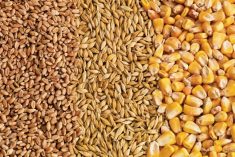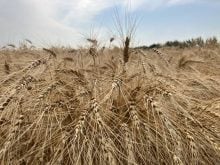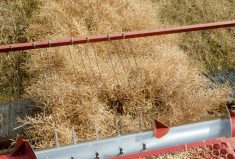MarketsFarm — Waiting for the 2019 harvest to roll in is the only factor that could create a feed shortage, according to Brandon Motz of CorNine Commodities at Lacombe, Alta.
“As far as things look today, I don’t see a reason to be concerned about a feed shortage. If anything we could have a feed surplus,” Motz said of the chances for a longer-term shortage.
Frost or a delayed harvest might have impact, should either or both occur, he said.
For now, Motz said, more sunshine is needed to get the harvest further along.
Read Also

U.S. grains: Soybeans rise on China demand hopes; corn and wheat rebound
Chicago Board of Trade soybean, corn and wheat futures rose on Monday on signs of progress towards the end of a record-long U.S. government shutdown, along with expectations of a revival of U.S. soybean exports to China, analysts said.
Prices inched up a little since last week, with barley at $245 per tonne, delivered in Lethbridge, with wheat roughly the same.
Motz said the fire that destroyed the Tyson Foods plant at Holcomb, Kansas last week likely won’t have much of an impact on Canada in terms of feed grains.
Cattle, as a result of the shutdown, might be in feedlots for a few more days before they’re sent for slaughter, requiring more feed.
— Glen Hallick writes for MarketsFarm, a Glacier FarmMedia division specializing in grain and commodity market analysis and reporting.















